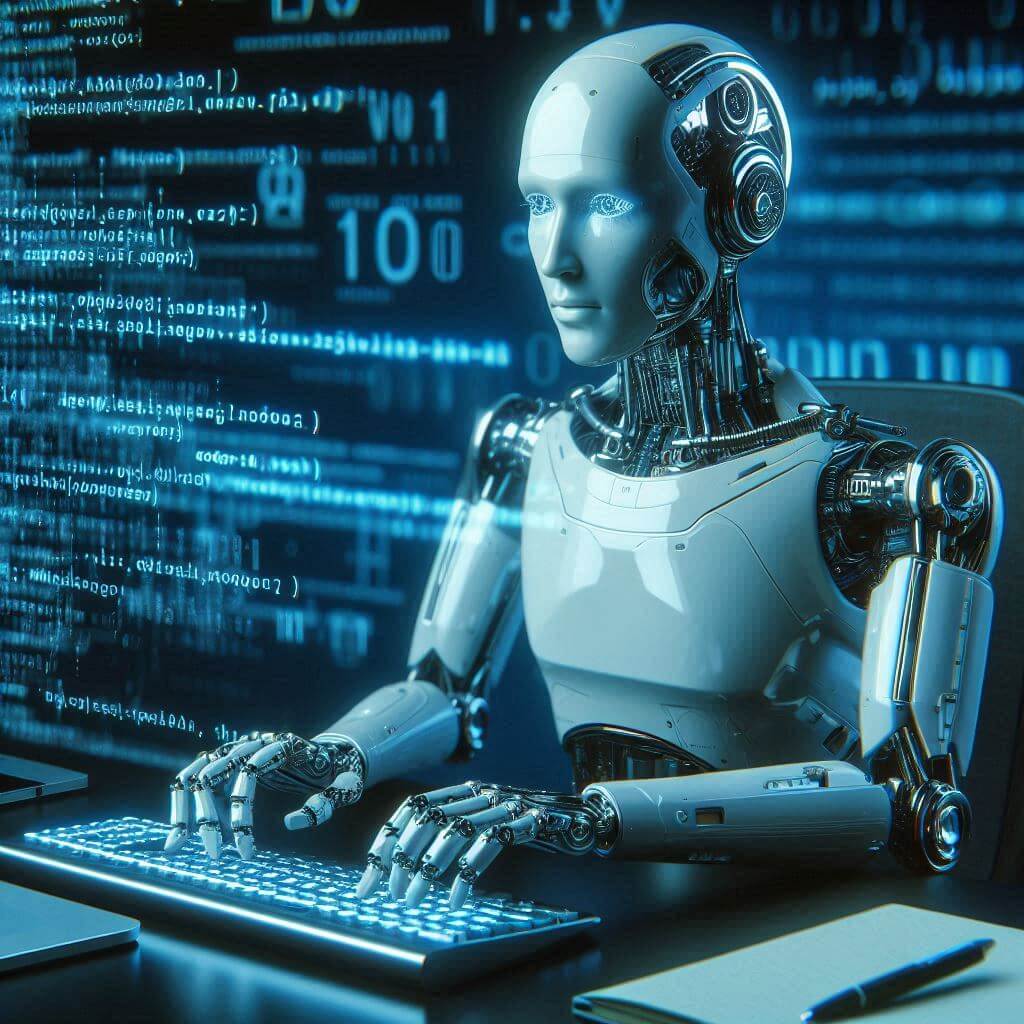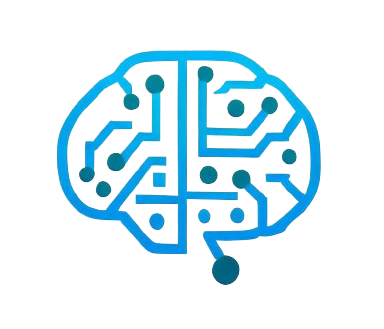Autoencoder is a type of artificial neural network used to learn an efficient representation of data. The basic structure of an autoencoder consists of three main parts: an encoder, a hidden space representation, and a decoder. The encoder compresses the input data into a smaller, denser representation, the hidden space captures this compressed form, and the decoder tries to recover the output data from the compressed form.
An autoencoder works by trying to copy its input to its output. Inside, it has a hidden layer that describes the code used to represent the input data. To build an autoencoder, we need two main components: an encoder that maps the input data into a code, and a decoder that maps the code into a reconstruction of the input data.
An encoder usually consists of several layers of neurons, each of which transforms the input data into a lower-dimensional form. For example, an image with thousands of pixels can be scaled down to a smaller vector, preserving essential features like edges and shapes. This process is similar to reducing a high dimensional space (input images) to a smaller dimensional space (encoded vector). Each layer in the encoder uses activation functions to introduce nonlinearity, allowing the network to capture complex patterns in the data.
 The middle layer, or “bottleneck,” represents compressed data or hidden space. This bottleneck forces the network to learn the most important features needed to reconstruct the input data. The size of the latent space is a crucial parameter: too small, and the model may not receive enough information; too large and it may not achieve significant compression.
The middle layer, or “bottleneck,” represents compressed data or hidden space. This bottleneck forces the network to learn the most important features needed to reconstruct the input data. The size of the latent space is a crucial parameter: too small, and the model may not receive enough information; too large and it may not achieve significant compression.
A decoder is structurally similar to an encoder but works in reverse order. It takes the compressed representation from the latent space and maps it back to the original input space. The decoder tries to reconstruct the input data as accurately as possible. Like the encoder, the decoder consists of multiple layers and uses activation functions to accommodate non-linearity.
The main objective of an autoencoder is to minimize a loss function that measures the difference between the original input and the reconstructed output. Common loss functions include mean squared error (MSE) and cross-entropy. During training, the autoencoder adjusts the weights and biases in its neurons to reduce this loss, improving its ability to accurately reconstruct the input data.
Autoencoders have a unique property – they are unsupervised learning models. This means they don’t need labeled data for training. Instead, they learn features based on input data alone, making them particularly useful where labeled data is scarce or expensive to obtain. They are somewhat similar to principal component analysis (PCA), but with a non-linear approach that allows them to capture more complex relationships in the data.
How Autoencoders Work
To understand how autoencoders work, it is very important to delve into the three main stages of this neural network: encoding, hidden space representation, and decoding.
The first stage involves an encoder that transforms the input data into a less dimensional form. This is achieved by using multiple layers of neurons in a neural network. For example, if the input data is an image, the value of each pixel can be fed to the encoder input layer. The input layer is followed by one or more hidden layers that systematically reduce the dimensionality of the data. Hidden layers use activation functions such as ReLU (Rectified Linear Unit) or sigmoid, introducing non-linearity and allowing the network to capture complex patterns in the data. The output of the final encoder layer is a compressed version of the input data, often called an encoded representation or code.
Once data is encoded, it exists in a compressed form known as a hidden space representation. This hidden space is crucial because it captures the most important characteristics of the input data in a more compact form. The dimensionality of the hidden space is a hyperparameter that can be adjusted based on the desired level of compression. A smaller size results in more compression but may lose some information, while a larger size preserves more information but achieves less compression. This trade-off is important in determining the performance of the autoencoder in various applications.
The final stage is the decoding process, during which the compressed data is returned to its original form. The decoder, in fact, is a mirror of the encoder, its layers return the data to the original dimensions. It takes a hidden space representation and processes it through several layers, each of which uses similar activation functions as in the encoder to reconstruct the output. The goal is to make this reconstructed data as close as possible to the input data while minimizing the reconstruction error. Reconstruction error is usually measured using a loss function, such as the mean squared error (MSE), which calculates the root mean square of the differences between the original and reconstructed data.
During the training phase of the autoencoder, the neural network is trained by adjusting the weights and biases of the neurons to reduce the reconstruction error. This learning process includes backpropagation, where the error is propagated back through the network, and gradient descent, which updates the model parameters to minimize the error. Training requires a large amount of data for the network to generalize well to new, unseen data.
An important aspect of the decoding process is that as it attempts to reconstruct the original data, minor details or noise present in the input data can be smoothed out, which is useful in applications such as image denoising. In addition, the ability to reconstruct the original data from the compressed version indicates that the hidden space representation effectively captured the essential characteristics of the input data.
Application of Autoencoders
One important application of autoencoders is denoising data. In situations where the data is corrupted by noise, such as low-quality images or audio recordings with background noise, autoencoders can be trained to distinguish between the underlying signal and the noise. During training, the autoencoder receives noisy input data and corresponding clean target data. After training, the autoencoder can take noisy data as input and output it in a denoised version. This technique is widely used in image processing to improve the quality of photographs, in medical imaging to improve the clarity of scans, and in audio processing to remove unwanted sounds from recordings.
Autoencoders offer an efficient means of reducing the number of features in a dataset while preserving relevant information, making them invaluable for data visualization and exploratory data analysis. By compressing data into a lower-dimensional space, autoencoders facilitate the visualization of high-dimensional data, which can aid in the identification of patterns and clusters. This reduced dimensionality is also useful for speeding up other machine learning algorithms, as it reduces computational complexity by focusing on the most important features. For example, in genomics, autoencoders can reduce the size of gene expression data, allowing researchers to more efficiently analyze and visualize relationships between genes.
Another important application of autoencoders is anomaly detection. By learning about normal patterns in a data set, autoencoders can identify deviations that indicate anomalies. During training, the autoencoder learns to accurately reconstruct normal data. When anomalous data is presented during logical inference, the reconstruction error is significantly higher because the autoencoder has not learned to effectively represent these anomalies. The technique is particularly useful in industries such as finance to detect fraudulent transactions and cybersecurity to detect unusual patterns that indicate potential security breaches. In manufacturing, autoencoders can be used to detect faults by analyzing sensor data and detecting deviations from normal operating conditions.
In recent years, the ability of autoencoders to generate new data from compressed representations has been used for creative tasks. Variational autoencoders (VAEs), a specialized form of autoencoders, can generate new images similar to the input data by sampling from latent space. This is achieved by introducing a probabilistic component into the latent space, allowing the model to generate diverse and realistic results. The technique has been used to create art, create synthetic images to train machine learning models, and even to discover drugs by creating molecular structures. For example, VAEs have been used to generate new handwriting samples that resemble authentic handwritten digits, useful for expanding datasets in handwriting recognition tasks.
Autoencoders also find applications in medical data analysis, particularly in the compression and reconstruction of complex medical images such as MRI and CT. By reducing the dimensionality of these high-resolution images, autoencoders facilitate efficient storage and transmission. In addition, they can help identify patterns in image data that can aid in the early diagnosis of diseases. For example, by training an autoencoder to scan healthy lungs, it can effectively highlight abnormalities on new scans, helping radiologists spot potential problems such as tumors or infections.
In recommender systems, autoencoders are used to learn user preferences from multidimensional interaction data. By compressing the user interaction matrix with an element into a lower-dimensional hidden space, autoencoders can capture underlying patterns of user behavior. This compressed representation is then used to make recommendations by predicting how users will interact with items they have not previously evaluated. For example, autoencoders can improve the quality of recommendations in streaming services by understanding user preferences and suggesting new content that matches their tastes.
